The holidays are coming and with them a lot of fancy special meals! Prime Rib, also known as a standing rib roast, boneless rib roast, beef rib roast or just rib roast, is the king of all holidays meals.
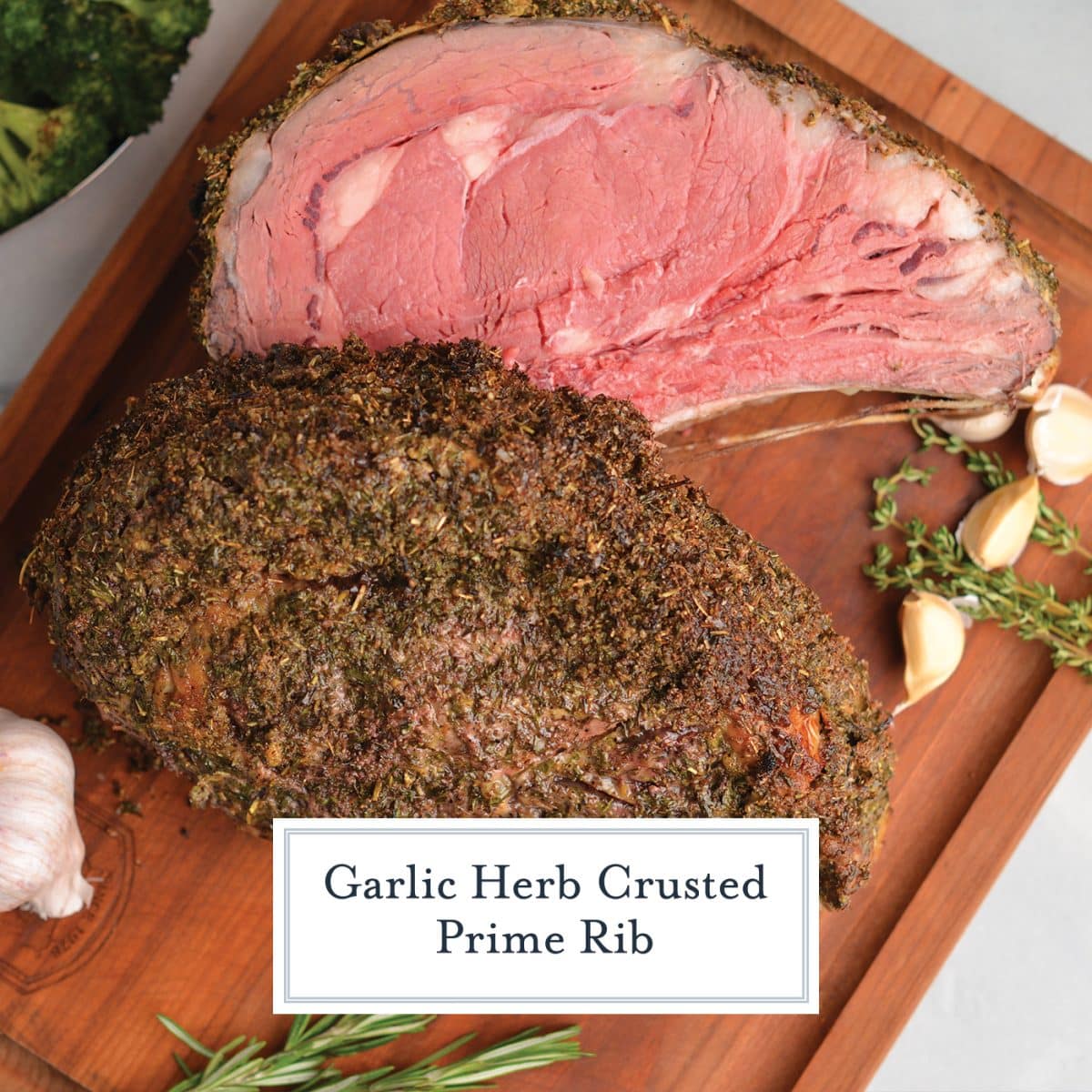
What is Prime Rib Roast?
Worthy of special occasions or Christmas dinner, nothing is more grand than a Prime Rib Roast. Crusted with garlic, herbs and spices to create a flavorful bark, this is the best prime rib recipe you will ever eat!
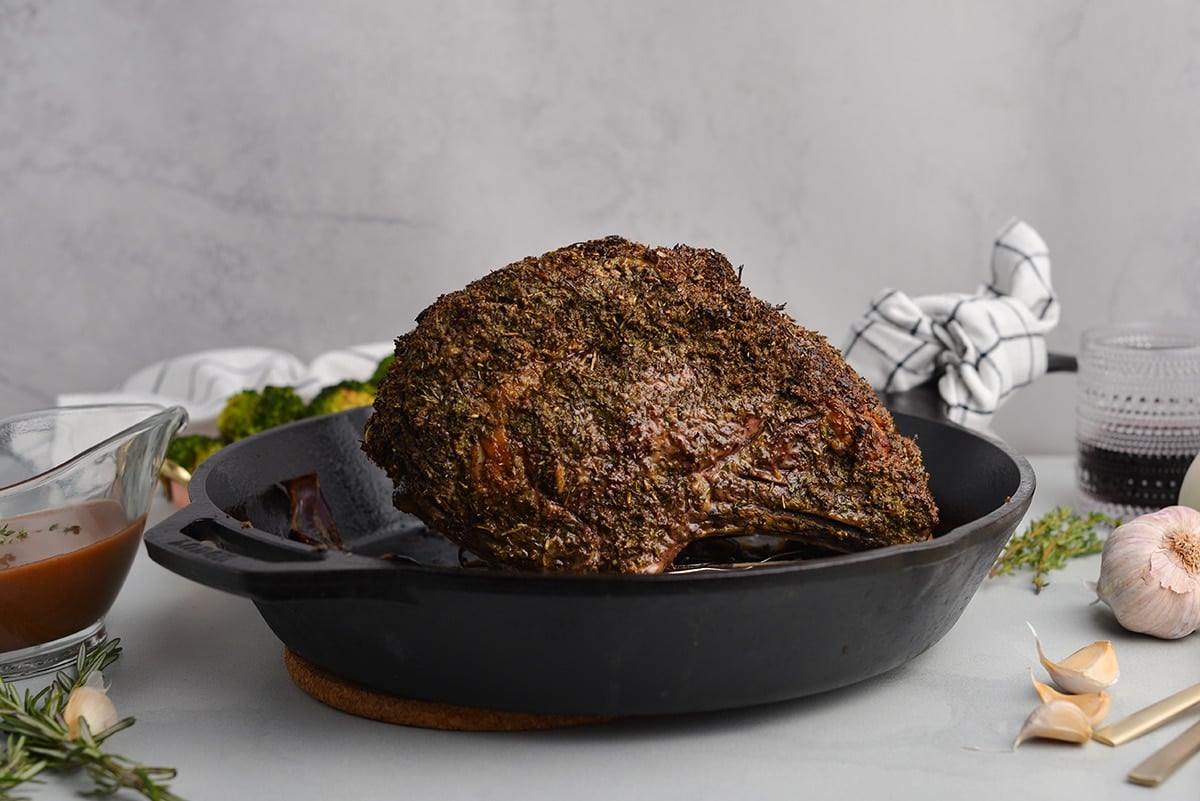
Bone-In Prime Rib Versus Boneless Prime Rib
Bone-In Prime Rib– Many chefs will tell you that the bones make it richer, and while this is true, boneless will taste nearly the same. It is a flavorful piece of meat in general. The downside to bone-in is that you still have to pay per pound… for the bones you won’t be eating.
On the up side, they make a beautiful centerpieces. You can get them without being trimmed or trimmed, also known as a French Cut, which means the meat in the middle is carved away leaving a handle, of sorts. The bones also make an excellent beef broth.
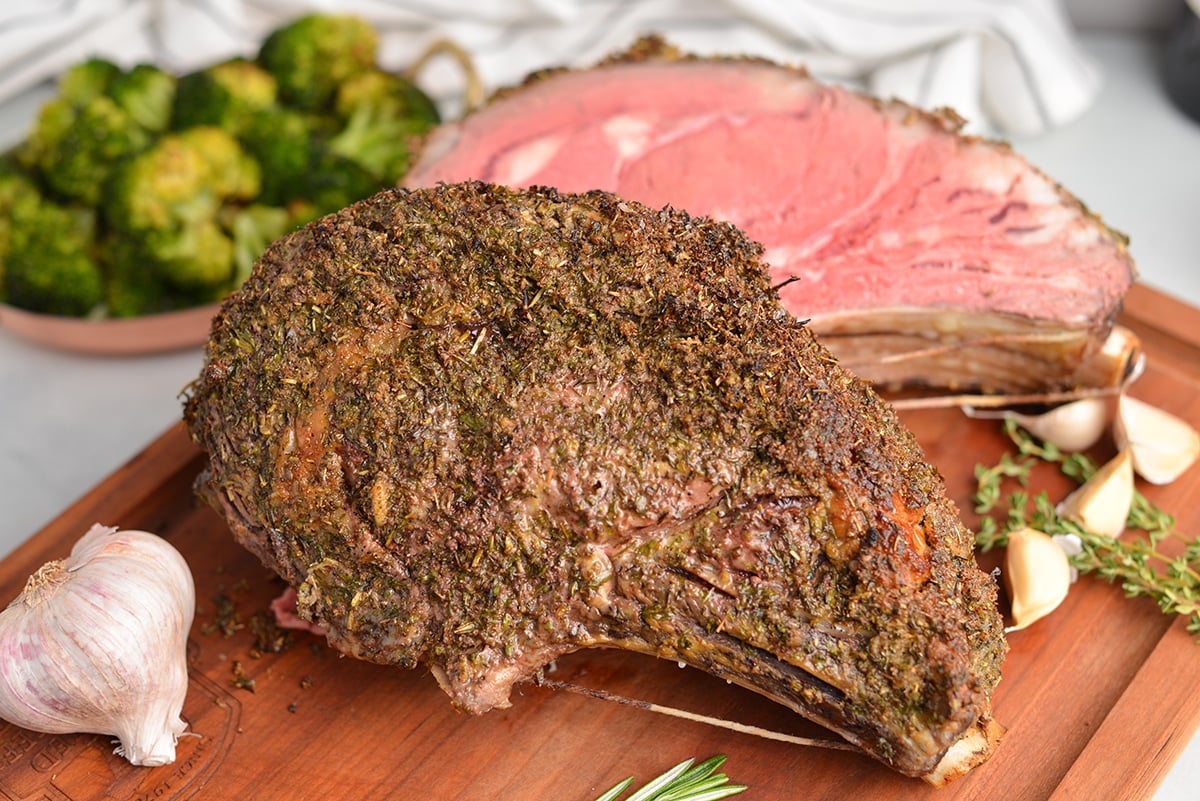
Boneless Prime Rib– Just means that the handles have been butchered off and you won’t have to mess with any bones while carving. You might miss a small tad of richness, but nothing you’d notice unless doing a side-by-side tasting. The upside is that it will cost less, or you can buy more, because you aren’t paying for the bones.
It will still be an impressive roast worthy of a centerpiece or special occasion.
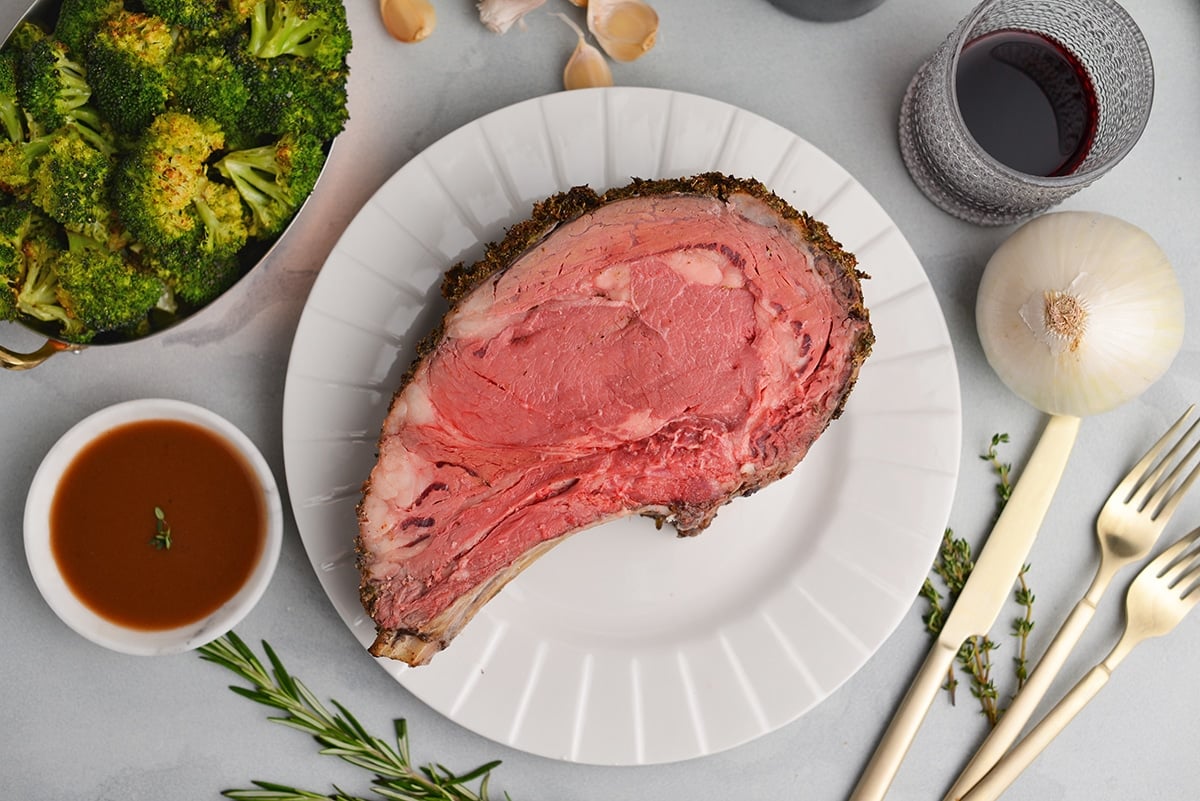
How Much Prime Rib Do I Need Per Person?
Great question! Generally speaking, one rib will feed 2-3 people. For normal people this slice will weigh close to 1 pound and can be carved into individual servings.
However, if you are seeking the Instagram worthy “king cut”, a slab of meat with the Fred Flintstone bone attached that is literally too big for the plate- you’ll need one rib per person.
What is a king cut of prime rib? Basically just a large, bone-in slice that is left whole and not carved into smaller portions. A queen cut of prime rib is the same thing, but from a boneless roast.
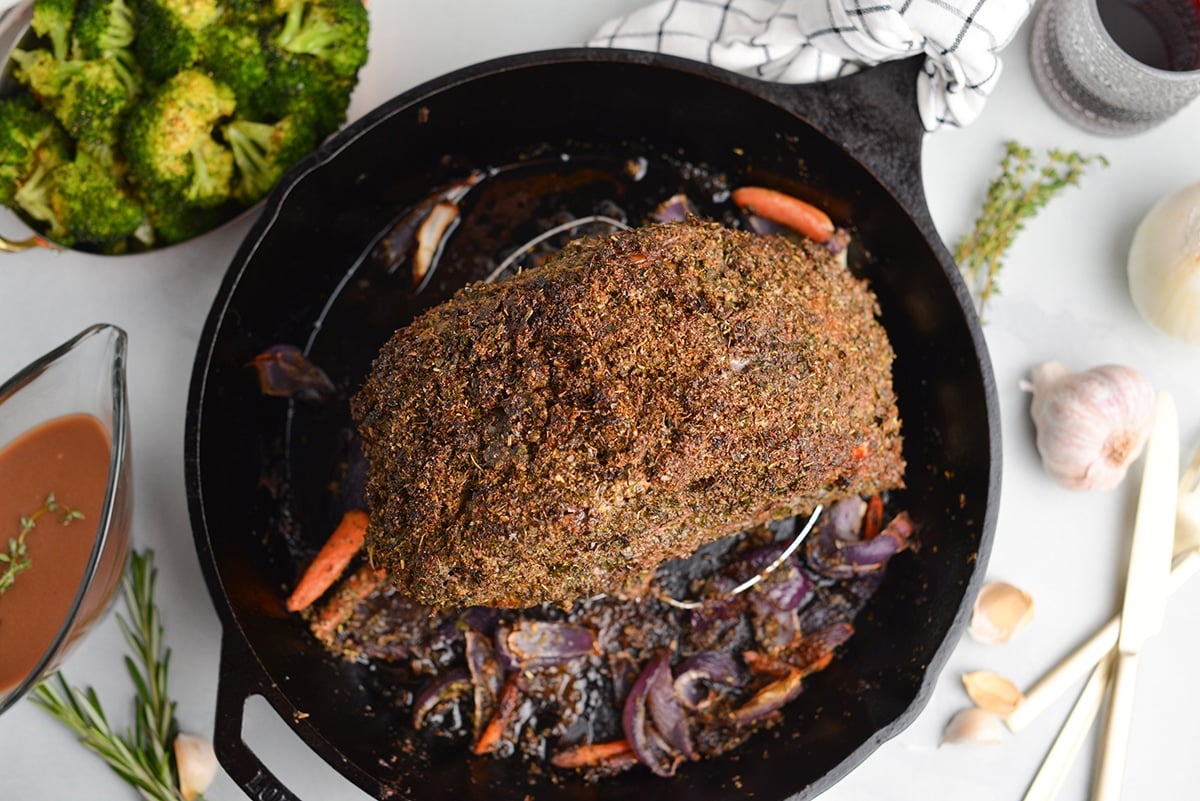
Best Prime Rib Recipe Ingredients
These are simple ingredients meant to complement the beef. Feel free to adjust the actual spices or volumes used in the bark. A good cut of beef doesn’t need much to make it taste better.
- Prime Rib Roast– Weights and grades will vary. The average if 3-4 ribs or 5 pounds. Dab dry with paper towels.
- Bark (seasoning)– freshly ground black pepper, coarse kosher salt, dried parsley, dried oregano, dried rosemary, dried thyme, celery seed, onion powder, garlic powder and fresh garlic cloves. You can use fresh herbs, but since it roasts for so long, they will be dried out anyhow.
- Olive oil & Dijon Mustard– Essentially the glues that holds the herb crust together. You can use other forms of mustard, but I prefer Dijon.
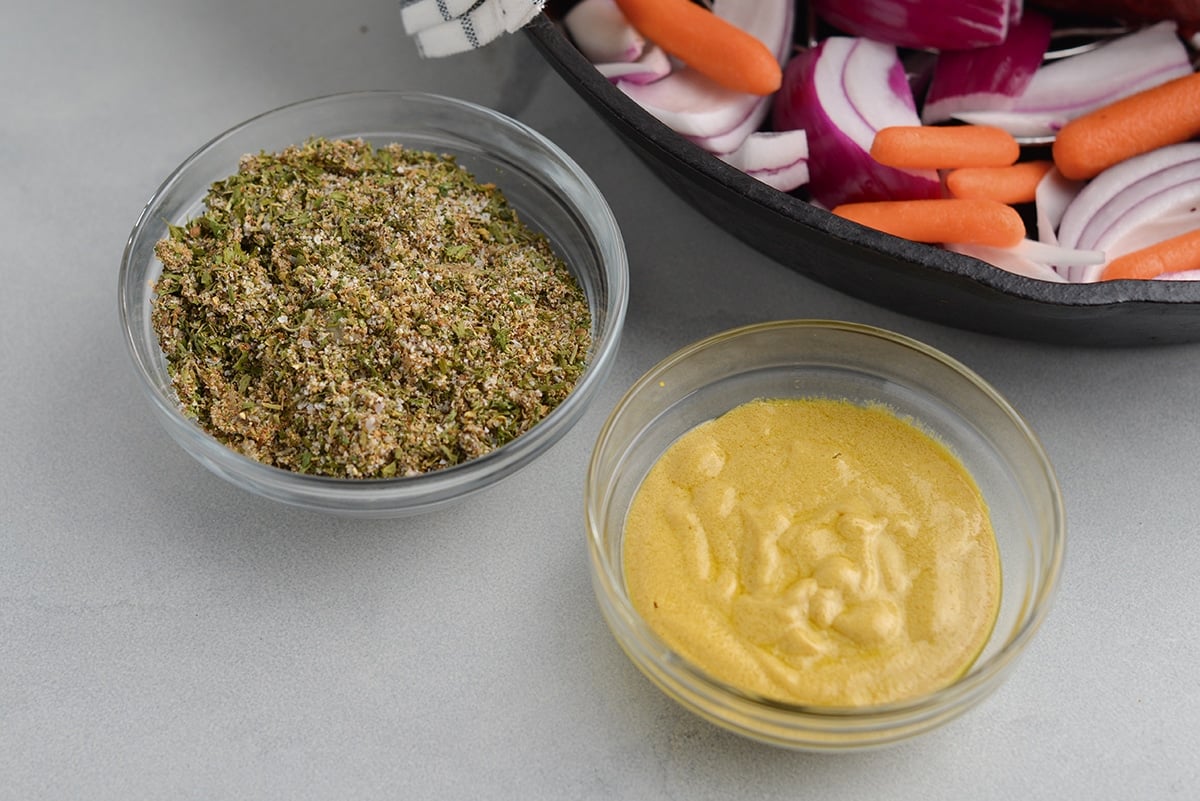
What Cut to Buy for this Prime Roast Recipe
The perfect prime rib is actually really simple to make as long as you are willing to invest in a pricey cutof meat. I think that the price of the cut sometimes intimidates folks; fear of failing with such a delicacy. Knowledge breeds confidence, so let’s get to know this glorious cut of beef.
A standing rib roast, also known as prime rib, is a cut of beef from the primal rib and can come boneless (bones are removed by the butcher) or with ribs. It is one of the nine primal cuts of beef. The entire rib section comprises ribs six through 12, a standing rib roast may contain anywhere from two to seven ribs.
Even if you purchase a boneless rib roast, the packaging will likely tell you how many “rib bones” it is to measure the amount per person.
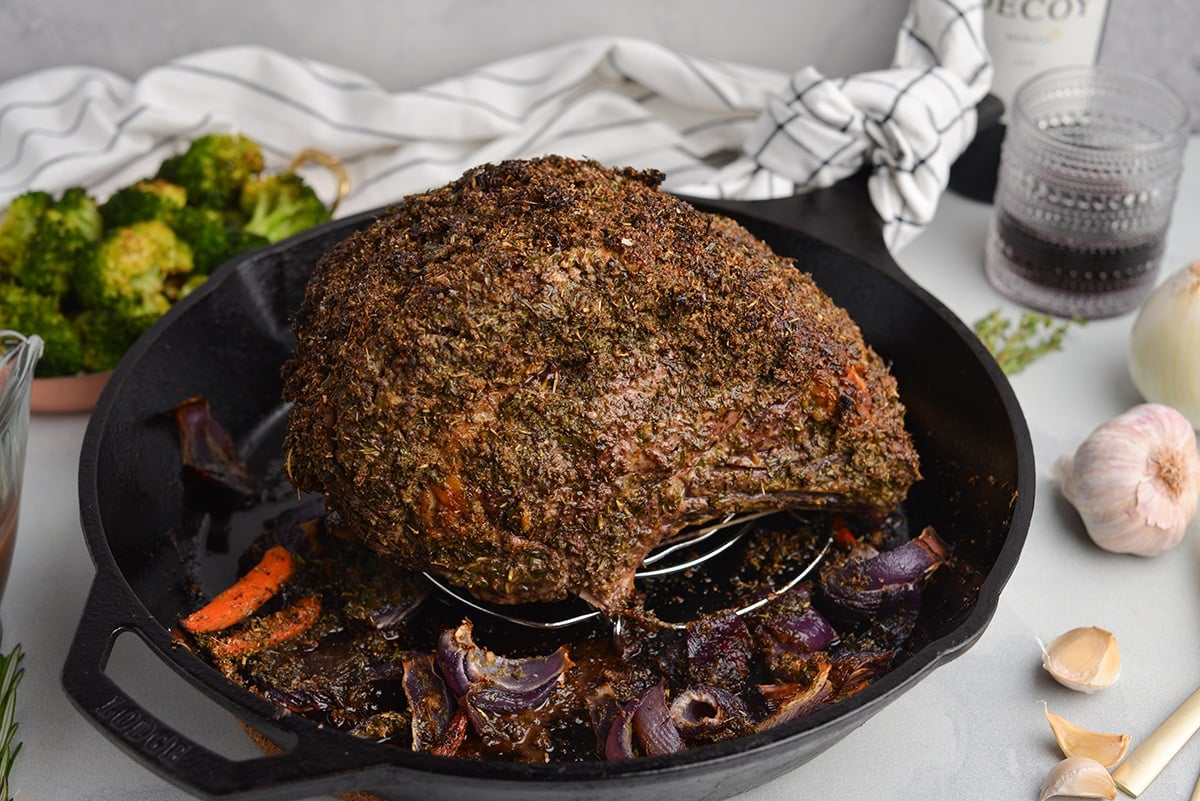
How to Cook this Prime Rib Roast Recipe
Make sure to plan enough time- while this isn’t an advanced recipe, nor a super hands-on recipe, it is a time consuming recipe. All-in, plan for at least 3 1/2-4 hours.
- Let the Meat Come to Temp: People say this, but it will takes several hours for a prime rib roast to be “room temperature”, I do however, suggest taking it out for about 1 hour so it isn’t as cold.
- Make the Herb Rub: Blend together the dry herbs and spices with the fresh garlic in a small bowl.
- Season the Roast: Blot the roast dry, which will aid in the herb crust being able to stick, then rub with olive oil and Dijon mustard. Using your hands, pat the dry herb rub into the oil and mustard. Let is sit for about 15 minutes so the flavorful crust has time to cure before cooking.
- Arrange: Do this before or after crusting, but place the roast on a rack. This can be a wire rack (like for cooling) on a rimmed baking sheet, roasting rack or roasting pan or a broiler pan (for larger roasts). The point is to let hot air circulate around the roast and for the juices to drip off and not make the crust soggy. Set it fat side up. I like to line the bottom pan with aluminum foil for easy clean up. If you want to season the drippings while roasting, arrange a whole onion, carrots and celery in the bottom around the roast. This is optional.
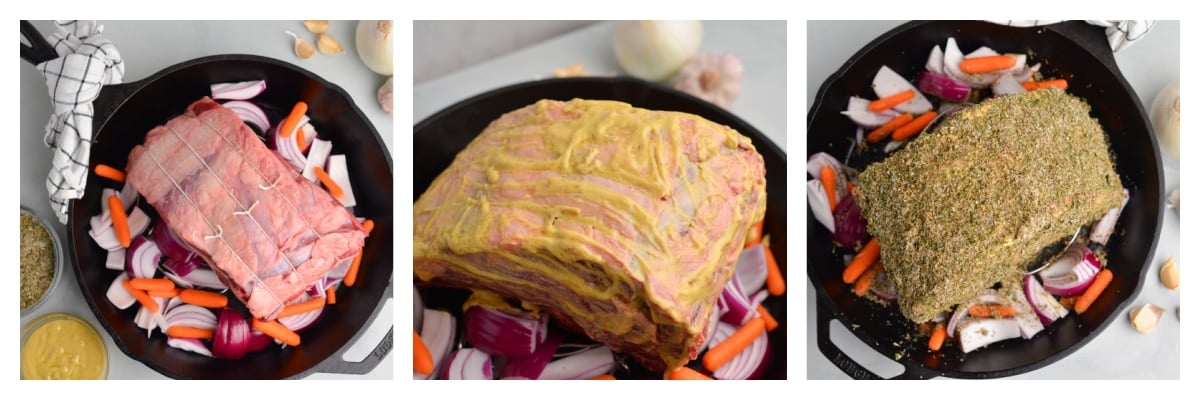
- Roast: The roast will start at a super high temperature to seal the bark and get it going. Then it will reduce to the roast temp, which is 325°F. Use the chart included in this post and a meat thermometer to get an internal temperature from the center of the roast to determine doneness and correct cooking time.
- Resting: Resting is imperative to all of those lovely juices staying inside the roast! The fibers will reabsorb the juices and instead of them ending up on your counter and cutting board, they will stay put where they belong. A larger piece of meat will require a longer resting period. The a 5 pound roast, this would be 30 minutes. Beef is very good at maintaining heat and quick frankly, this cut isn’t supposed to be served piping hot, but if you want to prevent it from cooling, tent or wrap the roast with aluminum foil.
- Make an Au Jus: You can make an easy au jus sauce from drippings or from beef broth, if you want, but certainly not required. The resting period is a great time to do this!
- Carving: Use a carving knife or very large, sharp cutting knife and cut into slices (about 1-2 inches thick) between the bones.
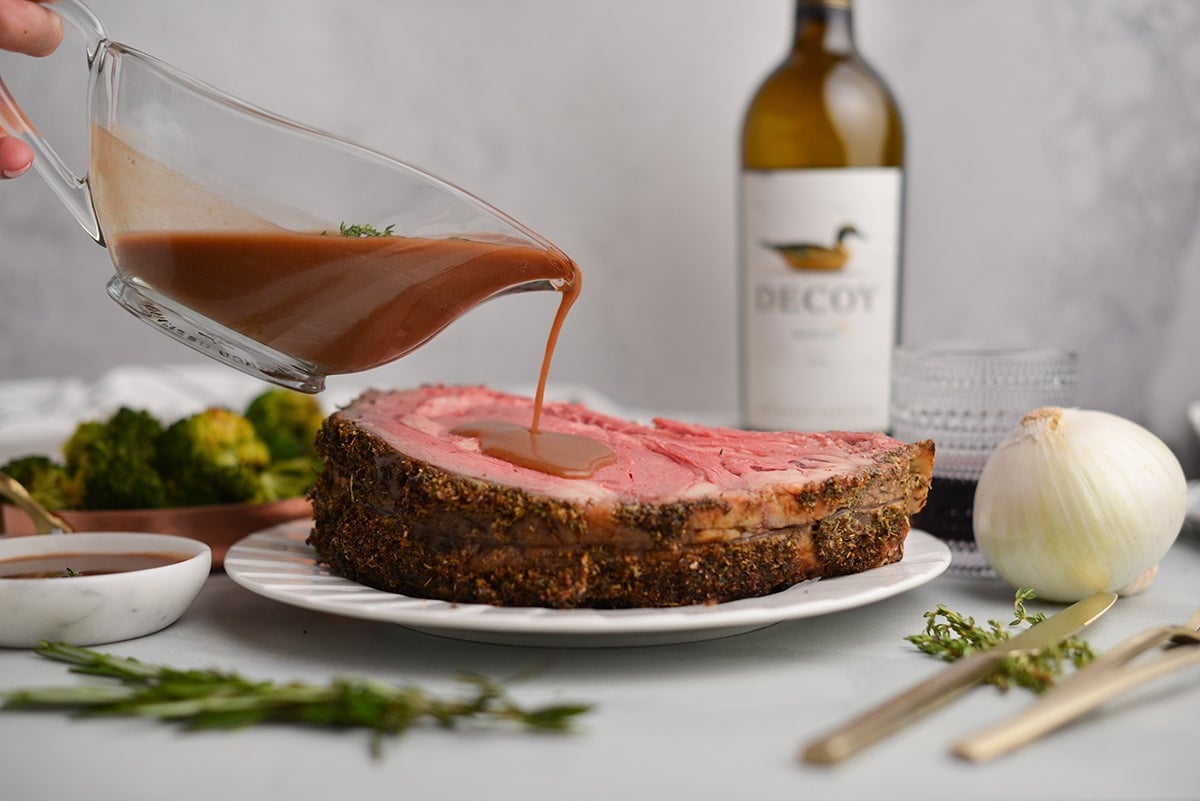
Best Prime Rib Roast Recipe Tips
The Importance of Tying a Roast
Don’t underestimate the importance of tying your roast. If left untied, the outer layer of meat will pull away from the rib-eye muscle and overcook, it also keeps the fibers of your meat close together, resulting in an evenly cooked roast.
Tie your roast in 2-inch sections very tightly. You can also ask your butcher they will generally do it for you, but it is super easy to do on your own. Don’t forget to snip the twine after cooking and before serving.
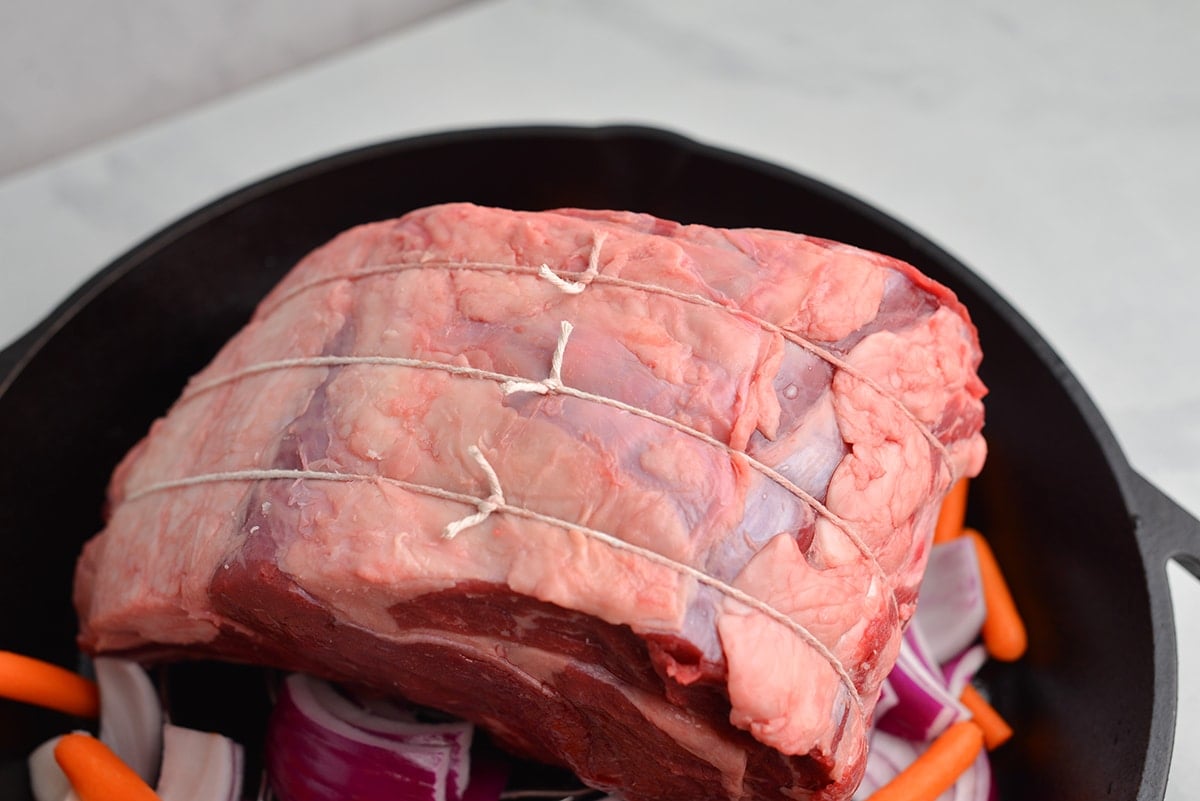
Rib Roast Recipe Cook Times & Temperatures
The cook time depends on the size of the roast and your desired degree of doneness. Prime rib loses flavor and the coveted texture if cooked past medium rare. If your guests insist on a medium to well done slice, place that slice back in the oven after you finish carving the medium rare boneless rib roast.
After the initial sear, you’ll want to roast it at 325°F and cook for:
- 10-12 min per pound for rare prime rib
- 13-14 min per pound for medium rare prime rib
- 14-15 min per pound for medium well prime rib
Remove the roast from the oven to rest when it is 5-10°F below the target temperature. Carryover cooking will continue to cook the meat during the resting period, so if you remove it when it hits the target temp, it will likely be a little over cooked by the time you serve.
Here is an easy chart to know the degrees of doneness. Use a digital thermometer to get the most accurate read. Do not guess!
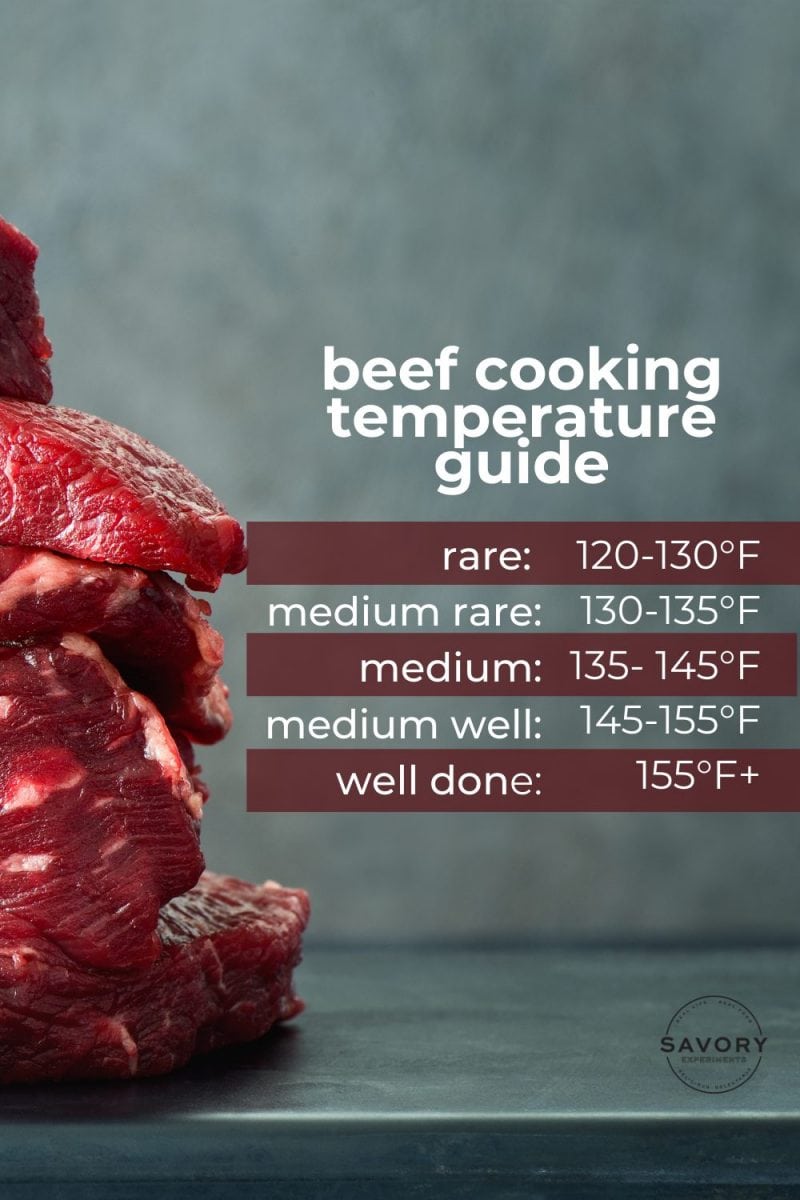
What to Serve with this Recipe for Prime Rib Roast
Dipping Sauce for Prime Rib
I like to serve my prime rib with Horseradish Cream Sauce. The soft, fluffy texture doesn’t overwhelm the meat. After making such a glorious roast, why would you want to weigh it down with a heavy sauce?
I also make my homemade steak sauce, Copycat Peter Luger Sauce. You can also serve it with an au jus or cup of natural juices. Red wine gravy is also a good option, as are blue cheese crumbles.
You can also top each slice with a compound butter, much like French steak frites. Foodies love a good maitre d’hotel butter or truffle butter.
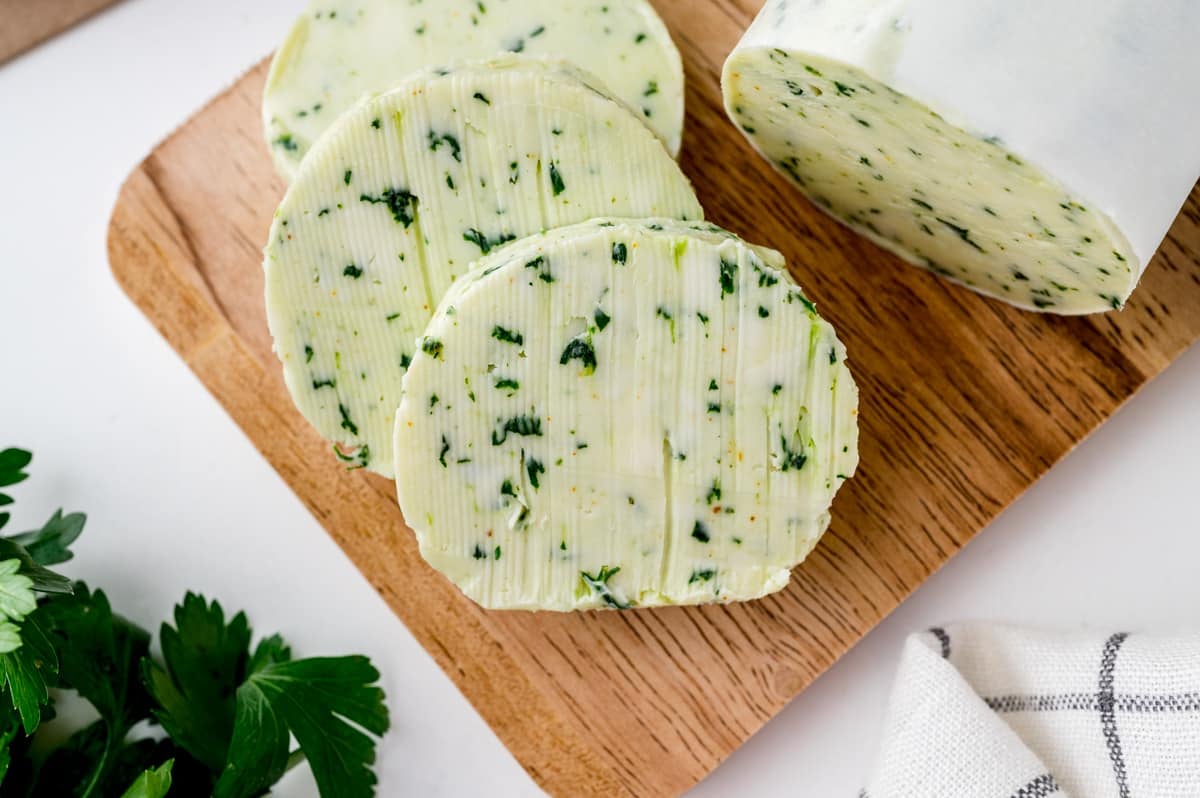
Veggies: This hefty piece of meat begs to be paired with some veggies. A leafy green salad is nice, but here are some of our other favorites.
Potatoes: Steak and potatoes, duh.
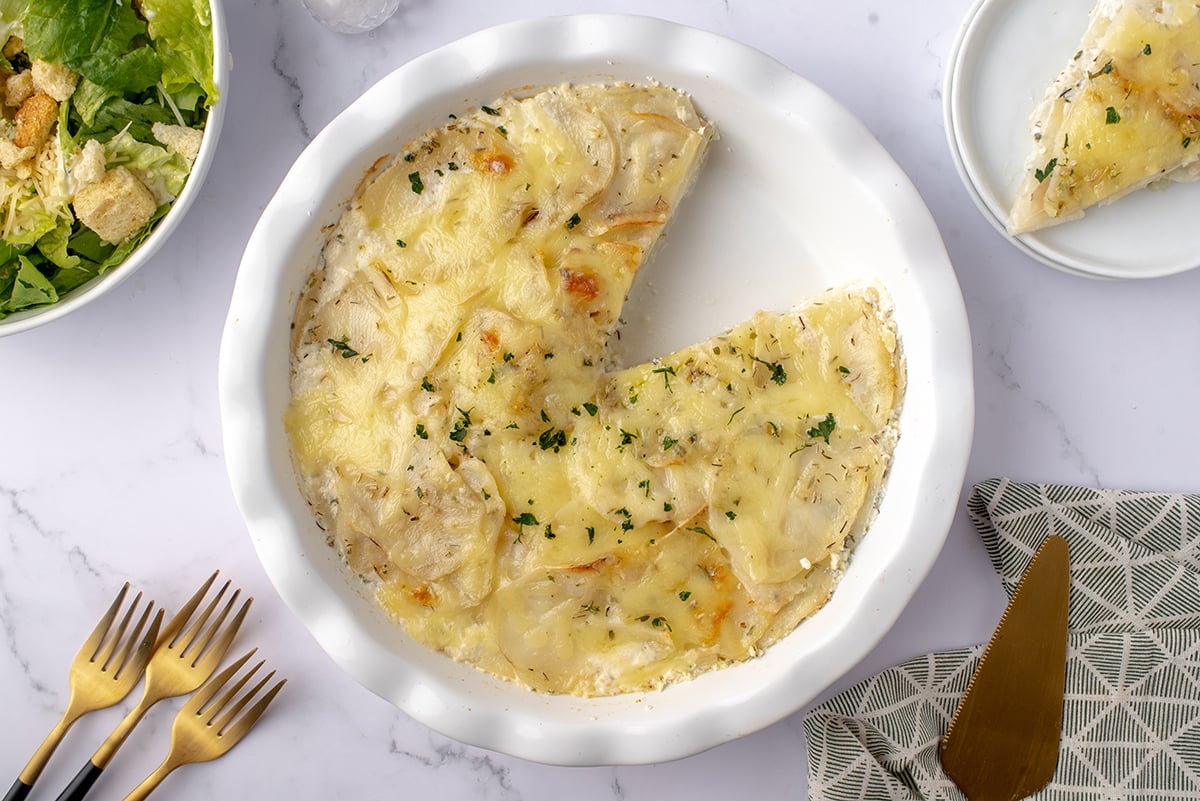
Rib Roast Recipe Storage & Reheating
How Do You Store Leftover Prime Rib?
Store leftover prime rib in an airtight container in the refrigerator for up to a week. Reheat covered in the oven at 300°F for about 5-7 minutes. It shouldn’t be piping hot, just barely warm.
Can You Freeze Prime Rib?
Cooked prime rib can be frozen in slices or cubes. Place into a freezer bag, pushing out as much air as possible. Freeze for 3 months. Thaw at in the fridge and then reheat using instructions above.
Best Way to Reheat Prime Rib
Reheating any type of beef usually ensure that it will be cooked to one degree higher of doneness than initially cooked. It is always best enjoyed freshly roasted. Just like leftovers, reheat covered in the oven at 300°F for about 5-7 minutes. It shouldn’t be piping hot, just barely warm.
Prime Roast Recipe FAQs
Yes, prime rib and ribeye are different cuts of beef. Prime rib is a large roast cut from the primal rib section, often roasted with the bone-in, while ribeye is a steak cut from the same rib section, typically boneless and known for its well-marbled, richly flavored meat.
Prime beef refers to the highest quality beef with superior marbling and tenderness, often graded by the USDA. Prime rib, on the other hand, is a specific cut of beef that comes from the primal rib section and is known for its well-marbled, flavorful, and tender meat, often roasted as a whole rib roast or cut into ribeye steaks.
Prime rib is special due to its exceptional flavor and tenderness, primarily attributed to the generous marbling of fat throughout the meat. This marbling creates a juicy, rich, and savory flavor profile, making prime rib a highly sought-after and indulgent cut of beef for special occasions.
The cost will vary greatly based on three factors:
Geographic location– markets like New York and Los Angeles are more expensive in general than a small midwest town.
Time of Year– The cost of a prime rib roast skyrockets during the holiday season because it is in-demand. My store has a sale right after New Year’s and I was able to get 3 roasts at 50% off. They were already shrink wrapped, so I threw them in the deep freezer for next year.
Grade of Beef– Beef is graded as a whole during processing, so the grader may not have a clear look at each cut. The label is a good starting point, but don’t make your choice purely cased on select, choice or prime. This cut, as a whole, is very fatty, which imparts flavor and makes it tender. Even a select cut will be succulent if cooked correctly.
With all of those things to consider, a prime rib roast will cost between $13-$22 per pound.
I literally wrote a book about beef, so please take this advice from me and don’t focus so much on the label, but for your own education, here are the grades of beef, but remember the best way to determine this is to inspect it yourself!
– Prime– The highest quality and accounts for 9% of beef that is sold. It has the most abundant marbling. The high fat content makes is more tender and super flavorful.
– Choice- One step down, this accounts for nearly 75% of beef sold in the US and is the most commonly available. These cuts have moderate to modest amounts of marbling, but still offer generous beefy flavor and are perfectly juicy. This is what most grocery stores will carry.
– Select- Another step down, they offer the least amount of marbling and thus will need more work to make them tender and juicy, but since a prime rib roast is already the fattest cut, they will still be easy to work with.
– Unlabeled- Sometimes called “no roll” to industry professionals, you likely won’t see a prime rib with this label. It is generally used for ground beef or other hot dogs.
Regardless of the grade of beef, make sure your prime rib has a fat cap or “lid”, a fatty top layer. This adds flavor and protects the precious meat from over cooking and drying out. I prefer getting mine from the local butcher.
Classic prime rib is well-seasoned on the exterior (bark) using a prime rib rub and initially seared at a high heat to create a spice crust that seals in all of the juices. The oven temperature is then reduced considerably while the roast continues to…. well, roast.
In this case we use a Dijon mustard to hold the garlic and herb seasoning to the roast.
They are often used interchangeably and people mean the same thing, but technically speaking they are not. “Prime rib” to a specific cut of beef that comes from the primal rib section of the animal, while “prime roast” may refer to a roast made from prime-grade beef, which is the highest quality designation given by the USDA.
Prime rib can also be labeled a standing rib roast, ribeye roast (boneless prime rib), rib roast or bone-in ribeye roast.
This largely depends on how large the roast is, what temperature you are cooking it at and the method of cooking. At 325°F, you’ll cook it for 15-20 minutes per pound, 15 minutes for a rare roast. Always use a meat thermometer to see the internal temp.
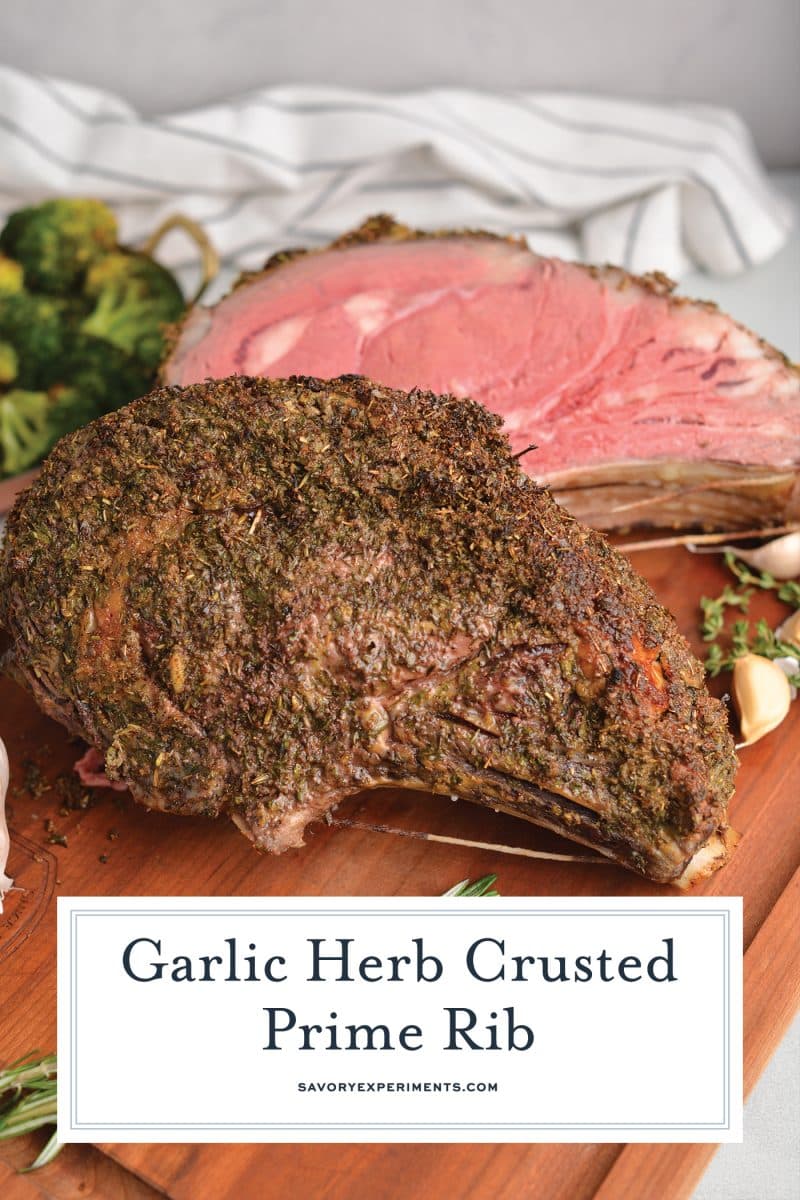
Best Prime Rib Roast Recipe
Equipment
Ingredients
- 4-6 pound bone-in or boneless rib roast , dabbed dry with paper towels
- 4 garlic cloves , pressed or grated
- 1 tablespoon dried parsley
- 1 tablespoon dried oregano
- 1 tablespoon black pepper , freshly ground
- 1 tablespoon coarse Kosher salt
- 2 teaspoons dried rosemary
- 2 teaspoons dried thyme
- 1 teaspoon onion powder
- 1 teaspoon garlic powder
- 1/2 teaspoon celery seed
- 2 tablespoons Dijon mustard
- 1 tablespoons extra virgin olive oil
- onion, carrots or celery , optional
- Horseradish Cream Sauce
Instructions
- Tie the roast with cooking twine at 2 inch increments. Preheat the oven to 475°F. Prepare a wire rack or broiler pan for the roast. *
- In a small bowl, stir together the garlic, parsley, oregano, pepper, salt, rosemary, thyme, onion powder, garlic powder and celery seed. Set aside.
- In another small bowl, whisk together the olive oil and mustard. Using a spatula or clean hands, smother this mixture onto the roast. Pat the dry herb mixture into the wet mixture so it sticks. Set aside for 15 minutes.
- If you want to season the drippings for an au jus, adding an onion, carrots and celery to the bottom of the roasting pan will help give it flavor while it cooks. This is optional and only needed if you plan to make an au jus sauce.
- Sear the roast at 475°F for 15 minutes. Then lower the oven temperature to 325°F and cook for 10-12 min per pound for rare prime rib, or 13-14 min per pound for medium rare prime rib, or 14-15 min per pound for medium well prime rib. Check the temperature using a digital thermometer.
- Remove the roast, tent with aluminum foil and allow to rest for 30 minutes.
- Place the roast on a cutting board and slice into 2-inch slices. Serve with your favorite sauce or compound butter (listed in the post!).
- If you've tried this recipe, come back and let us know how it was in the comments or star ratings.
Notes
- Rare- 120-130°F
- Medium rare- 130-135°F
- Medium- 135-145°F
- Medium Well- 145-155°F
- Well Done- 155°+F
Nutrition
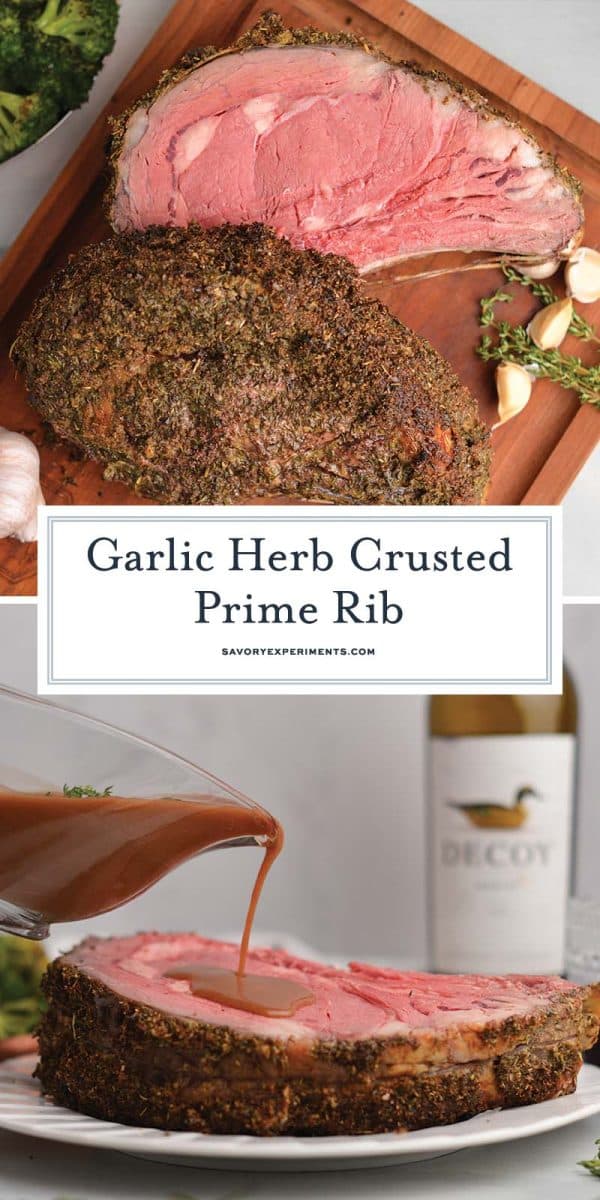
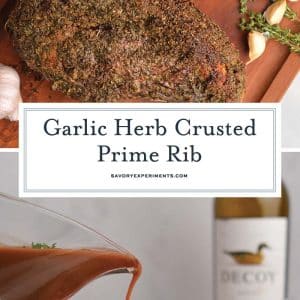
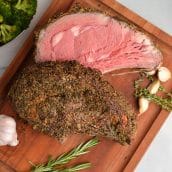
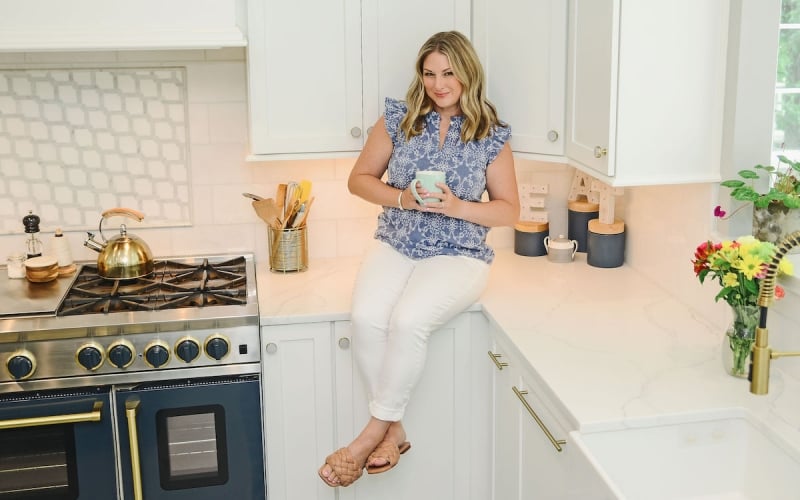
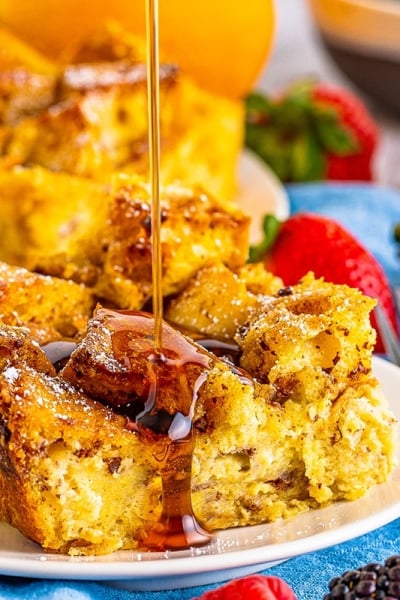
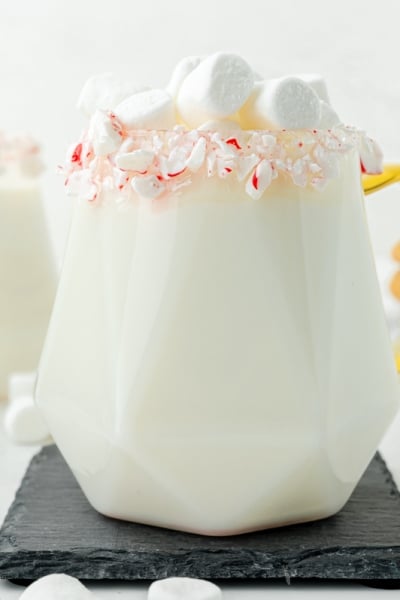
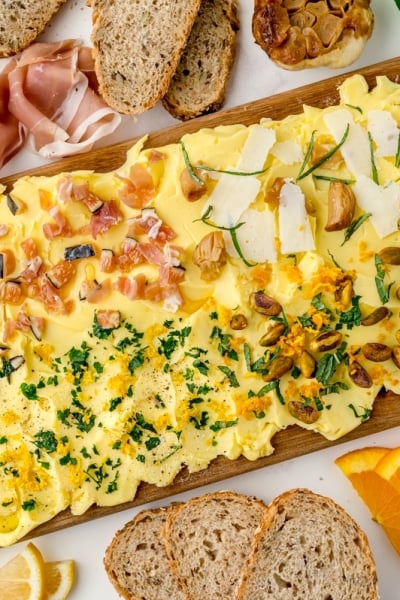
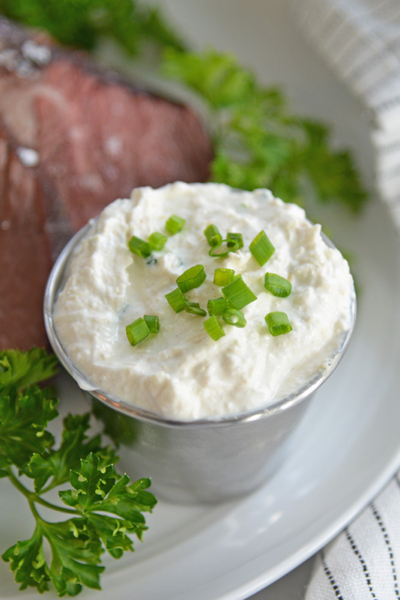
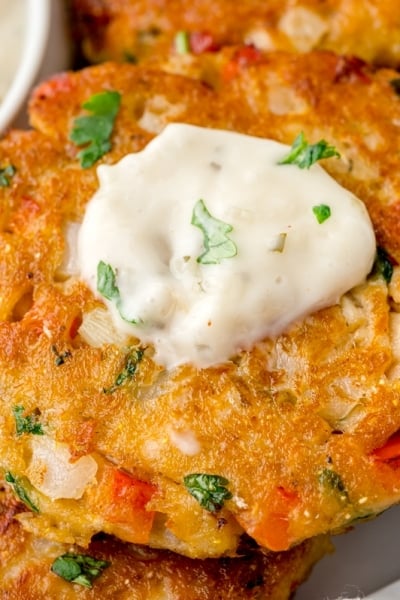
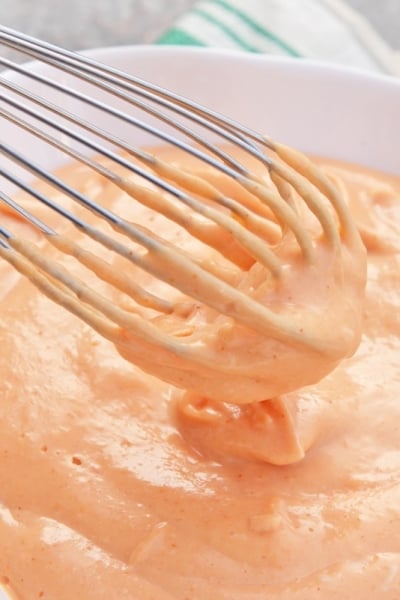
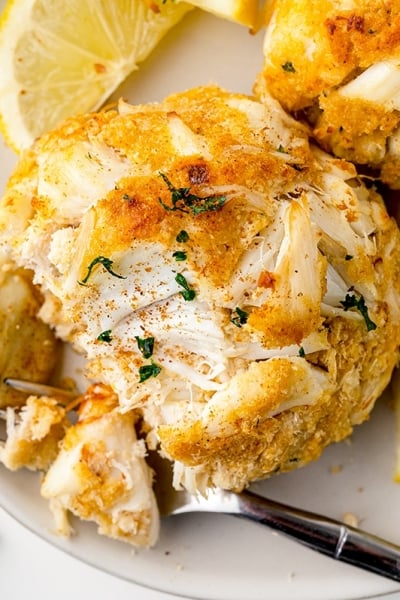
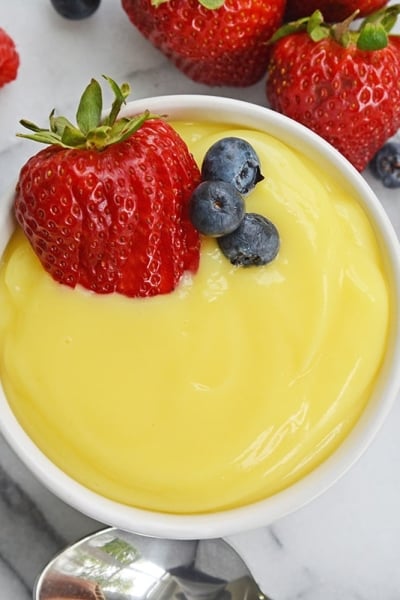
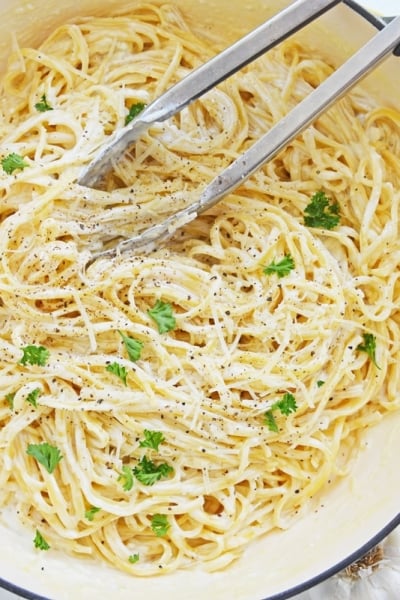
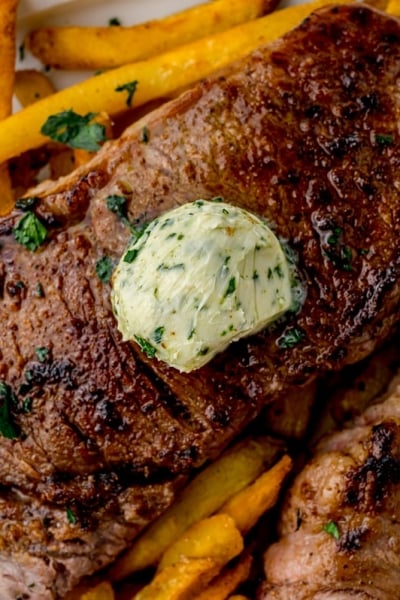







We love this recipie! I use it for my beef and lamb roasts. Super easy
Classics is classics. You are acing this recipe for sure. Makes me so hungry!
I have never made prime rib before, but you make it seem so doable! Thank you so much for the recipe, so excited to make it this weekend 🙂
I’ve been wanting to try making my own prime rib roast and this looks incredible and so easy too! I cannot wait to try this for my next gathering.
I was so nervous try to this recipe but I am 100% going to make it again. It turned out incredible! Even my youngest who is so picky ate it!
Thank you for such a thorough prime rib recipe! It looks amazing, a perfect recipe for the holidays!
I was looking for a quick, easy recipe for a smaller cut. Tried this one, and oh my goodness! Our prime rib roast came out absolutely fantastic! The “crust” was the perfect blend of seasoning and the meat was so tender and juicy! Amazing! Thanks so much!
Thanks for stopping by to let us know! Comments makes us happy:)
This looks like Christmas dinner to me. Thanks for sharing.
Wishes for tasty dishes,
Linda
Prime rib roast has always intimidated me. It’s the cost of the roast that has scared me, I think. I’d hate to burn it and have to go for Chinese on a holiday. Your recipe is so simple, it would be hard to ruin this roast. It would make a great holiday dish. Thanks. I’ve pinned and stumbled.
I’ve never made a prime rib, but this looks doable!
Totally! Pretty simple, actually!